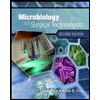
ANAT.+PHYS.LAB MANUAL-W/ACCESS >CUSTOM<
9th Edition
ISBN: 9781265357948
Author: SALADIN
Publisher: MCG CUSTOM
expand_more
expand_more
format_list_bulleted
Question
Chapter 28.5, Problem 20BYGO
Summary Introduction
Introduction:
The pregnancy period is also known as the gestation. This is the duration in which the progeny develops inside the uterus of a woman. This period consists of three trimesters. The mother and the fetus want some important nutrients during pregnancy.
Expert Solution & Answer
Want to see the full answer?
Check out a sample textbook solution
Students have asked these similar questions
Outline the negative feedback loop that allows us to maintain a healthy water concentration in our blood.
You may use diagram if you wish
Give examples of fat soluble and non-fat soluble hormones
Just click view full document and register so you can see the whole document. how do i access this. following from the previous question; https://www.bartleby.com/questions-and-answers/hi-hi-with-this-unit-assessment-psy4406-tp4-report-assessment-material-case-stydu-ms-alecia-moore.-o/5e09906a-5101-4297-a8f7-49449b0bb5a7.
on Google this image comes up and i have signed/ payed for the service and unable to access the full document. are you able to copy and past to this response. please see the screenshot from google page. unfortunality its not allowing me attch the image
can you please show me the mathmetic calculation/ workout for the reult section
Chapter 28 Solutions
ANAT.+PHYS.LAB MANUAL-W/ACCESS >CUSTOM<
Ch. 28.1 - Prob. 1BYGOCh. 28.1 - How is the structure of the uterine tube mucosa...Ch. 28.1 - Prob. 3BYGOCh. 28.1 - Prob. 4BYGOCh. 28.1 - Prob. 1AYLOCh. 28.1 - What mature female structures arise from the...Ch. 28.1 - Prob. 3AYLOCh. 28.1 - General structure of ovarian follicles; their...Ch. 28.1 - Prob. 5AYLOCh. 28.1 - Prob. 6AYLO
Ch. 28.1 - Prob. 7AYLOCh. 28.1 - The tilt of the vagina and its relationship to...Ch. 28.1 - Prob. 9AYLOCh. 28.1 - Prob. 10AYLOCh. 28.1 - The prevalence of breast cancer; its diagnostic...Ch. 28.2 - Prob. 5BYGOCh. 28.2 - Prob. 6BYGOCh. 28.2 - Prob. 7BYGOCh. 28.2 - Prob. 1AYLOCh. 28.2 - Prob. 2AYLOCh. 28.2 - Thelarche, pubarche, and menarche as signs of...Ch. 28.2 - Prob. 4AYLOCh. 28.2 - Prob. 5AYLOCh. 28.2 - Ovarian and hormonal changes that bring on female...Ch. 28.2 - Prob. 7AYLOCh. 28.3 - Prob. 8BYGOCh. 28.3 - Prob. 9BYGOCh. 28.3 - Prob. 10BYGOCh. 28.3 - Describe what happens in the uterus during the...Ch. 28.3 - Describe the effects of FSH and LH on the ovary.Ch. 28.3 - Prob. 13BYGOCh. 28.3 - Prob. 1AYLOCh. 28.3 - Prob. 2AYLOCh. 28.3 - Prob. 3AYLOCh. 28.3 - Ways in winch meiosis in the female differs from...Ch. 28.3 - How far meiosis has progressed by the time the egg...Ch. 28.3 - Prob. 6AYLOCh. 28.3 - Prob. 7AYLOCh. 28.3 - Prob. 8AYLOCh. 28.3 - Prob. 9AYLOCh. 28.3 - Prob. 10AYLOCh. 28.3 - Prob. 11AYLOCh. 28.3 - Production, structure, function, and eventual...Ch. 28.3 - Four phases of the menstrual cycle; what happens...Ch. 28.4 - Prob. 14BYGOCh. 28.4 - Prob. 15BYGOCh. 28.4 - Prob. 16BYGOCh. 28.4 - Prob. 1AYLOCh. 28.4 - Physiological responses of orgasm and resolution...Ch. 28.5 - List the roles of HCG, estrogen, progesterone, and...Ch. 28.5 - Prob. 18BYGOCh. 28.5 - Prob. 19BYGOCh. 28.5 - Prob. 20BYGOCh. 28.5 - Prob. 21BYGOCh. 28.5 - Prob. 22BYGOCh. 28.5 - Prob. 1AYLOCh. 28.5 - Prob. 2AYLOCh. 28.5 - Prob. 3AYLOCh. 28.5 - Prob. 4AYLOCh. 28.5 - Prob. 5AYLOCh. 28.5 - Causes of morning sickness, constipation, and...Ch. 28.5 - Prob. 7AYLOCh. 28.5 - Prob. 8AYLOCh. 28.5 - Prob. 9AYLOCh. 28.5 - Prob. 10AYLOCh. 28.5 - Prob. 11AYLOCh. 28.5 - Prob. 12AYLOCh. 28.5 - Prob. 13AYLOCh. 28.5 - Prob. 14AYLOCh. 28.5 - Prob. 15AYLOCh. 28.6 - Prob. 23BYGOCh. 28.6 - Prob. 24BYGOCh. 28.6 - Prob. 25BYGOCh. 28.6 - Prob. 26BYGOCh. 28.6 - Prob. 27BYGOCh. 28.6 - Prob. 1AYLOCh. 28.6 - Prob. 2AYLOCh. 28.6 - Prob. 3AYLOCh. 28.6 - Prob. 4AYLOCh. 28.6 - Prob. 5AYLOCh. 28.6 - Prob. 6AYLOCh. 28.6 - Prob. 7AYLOCh. 28 - Prob. 1TYRCh. 28 - Prob. 2TYRCh. 28 - Prob. 3TYRCh. 28 - Prob. 4TYRCh. 28 - Prob. 5TYRCh. 28 - Prob. 6TYRCh. 28 - Prob. 7TYRCh. 28 - Prob. 8TYRCh. 28 - Prob. 9TYRCh. 28 - Prob. 10TYRCh. 28 - Prob. 11TYRCh. 28 - Prob. 12TYRCh. 28 - Prob. 13TYRCh. 28 - Prob. 14TYRCh. 28 - Prob. 15TYRCh. 28 - Prob. 16TYRCh. 28 - Prob. 17TYRCh. 28 - Prob. 18TYRCh. 28 - Prob. 19TYRCh. 28 - Prob. 20TYRCh. 28 - Prob. 1BYMVCh. 28 - Prob. 2BYMVCh. 28 - Prob. 3BYMVCh. 28 - Prob. 4BYMVCh. 28 - Prob. 5BYMVCh. 28 - Prob. 6BYMVCh. 28 - Prob. 7BYMVCh. 28 - Prob. 8BYMVCh. 28 - Prob. 9BYMVCh. 28 - Prob. 10BYMVCh. 28 - Prob. 1WWTSCh. 28 - Prob. 2WWTSCh. 28 - Prob. 3WWTSCh. 28 - Prob. 4WWTSCh. 28 - Prob. 5WWTSCh. 28 - Prob. 6WWTSCh. 28 - Prob. 7WWTSCh. 28 - Prob. 8WWTSCh. 28 - Prob. 9WWTSCh. 28 - Prob. 10WWTSCh. 28 - Prob. 1TYCCh. 28 - Prob. 2TYCCh. 28 - Prob. 3TYCCh. 28 - Prob. 4TYCCh. 28 - Prob. 5TYC
Knowledge Booster
Learn more about
Need a deep-dive on the concept behind this application? Look no further. Learn more about this topic, biology and related others by exploring similar questions and additional content below.Similar questions
- Skryf n kortkuns van die Egyptians pyramids vertel ñ story. Maximum 500 woordearrow_forward1.)What cross will result in half homozygous dominant offspring and half heterozygous offspring? 2.) What cross will result in all heterozygous offspring?arrow_forward1.Steroids like testosterone and estrogen are nonpolar and large (~18 carbons). Steroids diffuse through membranes without transporters. Compare and contrast the remaining substances and circle the three substances that can diffuse through a membrane the fastest, without a transporter. Put a square around the other substance that can also diffuse through a membrane (1000x slower but also without a transporter). Molecule Steroid H+ CO₂ Glucose (C6H12O6) H₂O Na+ N₂ Size (Small/Big) Big Nonpolar/Polar/ Nonpolar lonizedarrow_forward
- what are the answer from the bookarrow_forwardwhat is lung cancer why plants removes liquid water intead water vapoursarrow_forward*Example 2: Tracing the path of an autosomal dominant trait Trait: Neurofibromatosis Forms of the trait: The dominant form is neurofibromatosis, caused by the production of an abnormal form of the protein neurofibromin. Affected individuals show spots of abnormal skin pigmentation and non-cancerous tumors that can interfere with the nervous system and cause blindness. Some tumors can convert to a cancerous form. i The recessive form is a normal protein - in other words, no neurofibromatosis.moovi A typical pedigree for a family that carries neurofibromatosis is shown below. Note that carriers are not indicated with half-colored shapes in this chart. Use the letter "N" to indicate the dominant neurofibromatosis allele, and the letter "n" for the normal allele. Nn nn nn 2 nn Nn A 3 N-arrow_forward
- I want to be a super nutrition guy what u guys like recommend mearrow_forwardPlease finish the chart at the bottom. Some of the answers have been filled in.arrow_forward9. Aerobic respiration of one lipid molecule. The lipid is composed of one glycerol molecule connected to two fatty acid tails. One fatty acid is 12 carbons long and the other fatty acid is 18 carbons long in the figure below. Use the information below to determine how much ATP will be produced from the glycerol part of the lipid. Then, in part B, determine how much ATP is produced from the 2 fatty acids of the lipid. Finally put the NADH and ATP yields together from the glycerol and fatty acids (part A and B) to determine your total number of ATP produced per lipid. Assume no other carbon source is available. 18 carbons fatty acids 12 carbons 9 glycerol A. Glycerol is broken down to glyceraldehyde 3-phosphate, a glycolysis intermediate via the following pathway shown in the figure below. Notice this process costs one ATP but generates one FADH2. Continue generating ATP with glyceraldehyde-3-phosphate using the standard pathway and aerobic respiration. glycerol glycerol-3- phosphate…arrow_forward
arrow_back_ios
SEE MORE QUESTIONS
arrow_forward_ios
Recommended textbooks for you
 Nutrition Through The Life CycleHealth & NutritionISBN:9781337919333Author:Brown, Judith E.Publisher:Cengage Learning,
Nutrition Through The Life CycleHealth & NutritionISBN:9781337919333Author:Brown, Judith E.Publisher:Cengage Learning, Microbiology for Surgical Technologists (MindTap ...BiologyISBN:9781111306663Author:Margaret Rodriguez, Paul PricePublisher:Cengage Learning
Microbiology for Surgical Technologists (MindTap ...BiologyISBN:9781111306663Author:Margaret Rodriguez, Paul PricePublisher:Cengage Learning Principles Of Radiographic Imaging: An Art And A ...Health & NutritionISBN:9781337711067Author:Richard R. Carlton, Arlene M. Adler, Vesna BalacPublisher:Cengage Learning
Principles Of Radiographic Imaging: An Art And A ...Health & NutritionISBN:9781337711067Author:Richard R. Carlton, Arlene M. Adler, Vesna BalacPublisher:Cengage Learning

Nutrition Through The Life Cycle
Health & Nutrition
ISBN:9781337919333
Author:Brown, Judith E.
Publisher:Cengage Learning,




Microbiology for Surgical Technologists (MindTap ...
Biology
ISBN:9781111306663
Author:Margaret Rodriguez, Paul Price
Publisher:Cengage Learning

Principles Of Radiographic Imaging: An Art And A ...
Health & Nutrition
ISBN:9781337711067
Author:Richard R. Carlton, Arlene M. Adler, Vesna Balac
Publisher:Cengage Learning
Necrosis vs. Apoptosis: Cell Death; Author: AMBOSS: Medical Knowledge Distilled;https://www.youtube.com/watch?v=zFrBwGfOQs0;License: Standard Youtube License